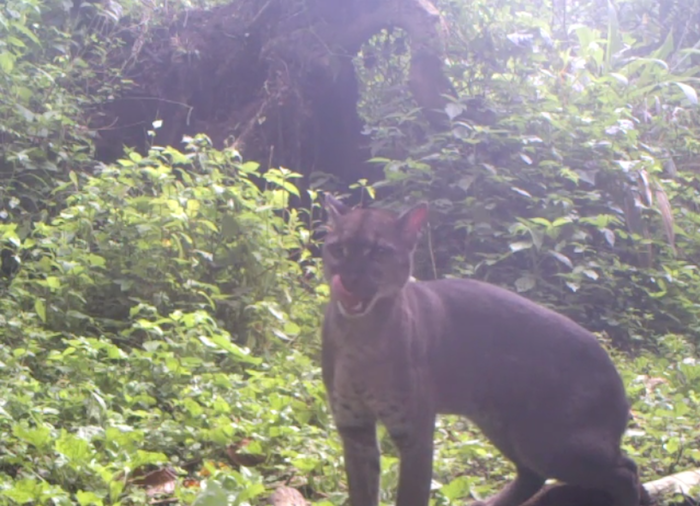Calvin Klein Cologne Lures Cats to the Camera

Calvin Klein's Obsession for Men is the fragrance of choice for field biologists. Beyond luring romantic partners, the masculine blend also attracts cats and other animals to remote cameras in the jungle.
New footage released by the Wildlife Conservation Society (WCS) shows an African golden cat investigating a camera trap in a protected rainforest in Uganda. WCS scientists say they baited the creature with Obsession for Men, which is commonly used in the field.
Scientific American previously reported on the Obsession phenomenon, explaining that biologists have used the fragrance to lure jaguars in Nicaragua. The cologne is thought to contain civetone, which comes from the scent glands of nocturnal cats called civets.
That chemical lends a musky note to Obsession for Men but it also resembles a territorial marking, stirring the jaguars' curiosity and prompting the cats to leave their own odorous calling card. The African golden cat, too, was recorded marking its own scent at the camera trap site in Uganda's Kibale National Park.
The cat, whose scientific name is Caracal aurata, is a secretive species. It is thought to roam tropical rain forests across equatorial Africa, but most scientists working in these jungles have never seen a live golden cat in the wild, according to WCS officials. Scientists with the cat conservation organization Panthera in Gabon only recorded the first footage of the species in the wild in 2011.
More camera trap footage could help researchers understand the species and address its conservation needs. Already, these images have led to the discovery that African golden cats are active both night and day, or "cathemeral," not strictly nocturnal as previously thought.
African golden cats are listed as near-threated by the International Union for Conservation of Nature (IUCN), often considered the chief authority on the conservation status of species.
Sign up for the Live Science daily newsletter now
Get the world’s most fascinating discoveries delivered straight to your inbox.
Follow Megan Gannon on Twitter and Google+. Follow us @livescience, Facebook & Google+. Original article on LiveScience.










